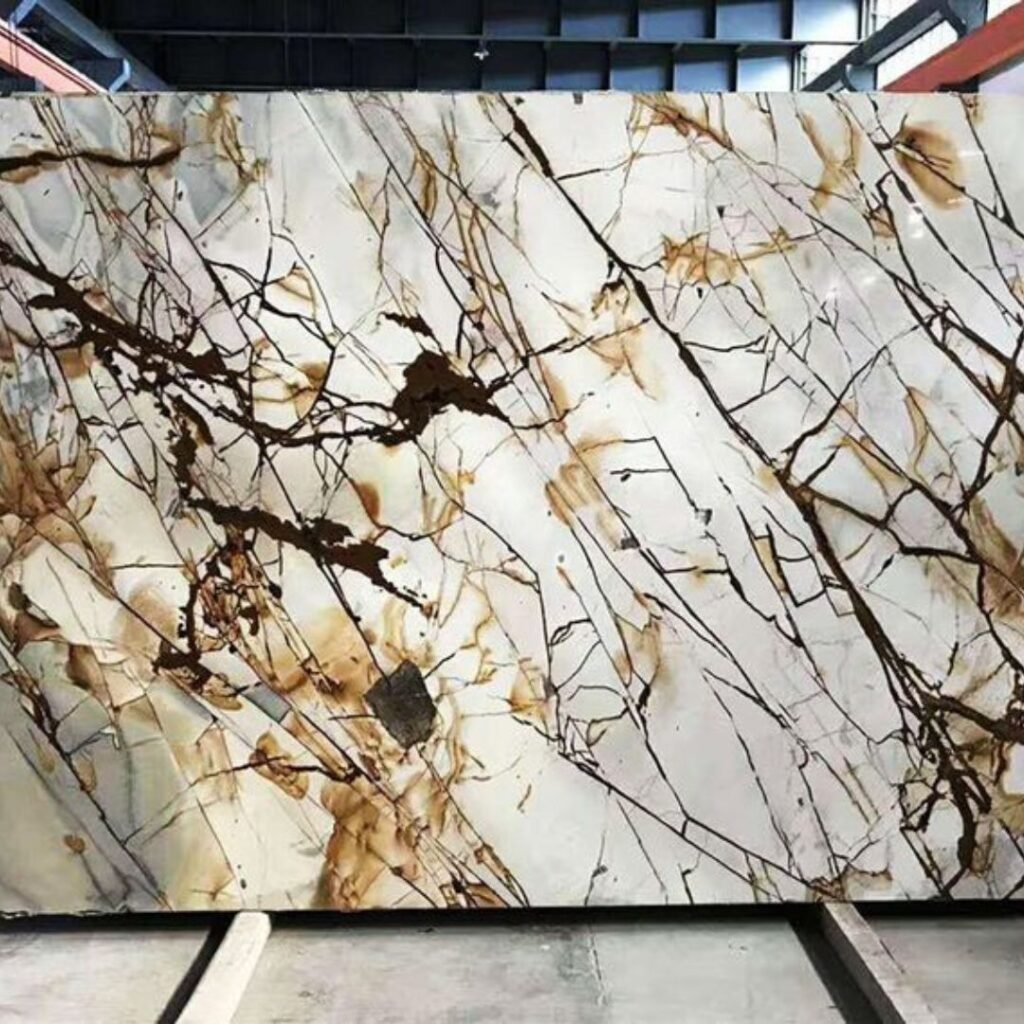
Introduction:
When it comes to infusing luxury and sophistication into your living spaces, the choice of marble plays a pivotal role. Indian and Italian marbles, both renowned for their timeless beauty, present distinct options for those seeking opulence in design. In this blog, we’ll navigate the intricate details of veining patterns, cost considerations, installation intricacies, thickness preferences, and overall appearances of Indian and Italian marbles. Let’s embark on the journey of choosing the perfect luxury stone for your space.



Understanding Indian Marble:
Indian marble, a product of the subcontinent’s geological richness, offers a diverse palette of colors and patterns. From the pristine whites of Makrana marble to the warm tones of Banswara marble, each variant has its unique charm. Indian marble is celebrated for its affordability and the ability to seamlessly blend with various design styles.



Italian Marble: A Symbol of Prestige and Elegance:
Italian marble, sourced from regions like Carrara, Statuario, and Calacatta, stands as an epitome of luxury. Known for its classic whites and bold veining patterns, Italian marble is often associated with high-end architecture and premium interiors. Choosing Italian marble is a statement of refined taste and timeless elegance.

Veining Patterns:
The veining pattern in marble is akin to its fingerprint, distinguishing one slab from another. Indian marbles generally feature flowing patterns and subtle veining, providing a softer, more varied aesthetic. Italian marbles, on the other hand, boast bold and dramatic veins, creating a striking visual impact that exudes luxury and grandeur.

Cost Considerations:
While Indian marble is known for its cost-effectiveness, Italian marble tends to be positioned at a higher price point. The cost difference is influenced by factors such as rarity, transportation, and installation complexities. Assess your budget and design aspirations to make an informed decision.
Installation and Thickness:
The installation of marble requires precision, and both Indian and Italian marbles are available in varying thicknesses. Consider the specific application – thicker slabs for countertops and flooring offer durability, while thinner slabs may be suitable for wall cladding and other decorative purposes.
Appearance and Aesthetic Appeal:
Indian marble introduces a warm and inviting aesthetic, with a wide range of colors to complement diverse design styles. Italian marble, with its luxurious appearance, adds a touch of timeless elegance to any space. Your choice should align with the desired ambiance and overall style of your interior.

Popular Varieties:
In India, Makrana marble, with its milky white hue, and Banswara marble, boasting warm tones and subtle veins, are among the popular choices. In Italy, Carrara, Calacatta, and Statuario marbles are coveted for their classic beauty and premium quality.
Maintaining Your Investment:
To preserve the beauty of both Indian and Italian marbles, regular maintenance is key. Use a pH-neutral stone cleaner for routine cleaning, avoid acidic substances, employ coasters to prevent stains, and consider sealing the marble to protect against moisture and wear.
FAQs for Using Indian & Italian Marble:
1. Q: Are Indian marbles suitable for high-traffic areas?
A: Yes, many Indian marbles, such as Banswara and Ambaji, are durable and well-suited for high-traffic areas.
2. Q: Is Italian marble difficult to maintain?
A: While Italian marble requires proper care, regular cleaning and sealing can help preserve its beauty for years.
3. Q: What is the average cost difference between Indian and Italian marble?
A: Indian marble is generally more budget-friendly, with Italian marble considered a premium option.
Conclusion:
In the grand debate of Indian Marble vs Italian Marble, your choice should be a harmonious blend of personal taste, budget constraints, and the desired aesthetic for your space. Both marbles possess a unique allure that can elevate your interiors to new heights of luxury and sophistication. Choose wisely, and let the timeless beauty of marble adorn your living spaces for generations to come.




